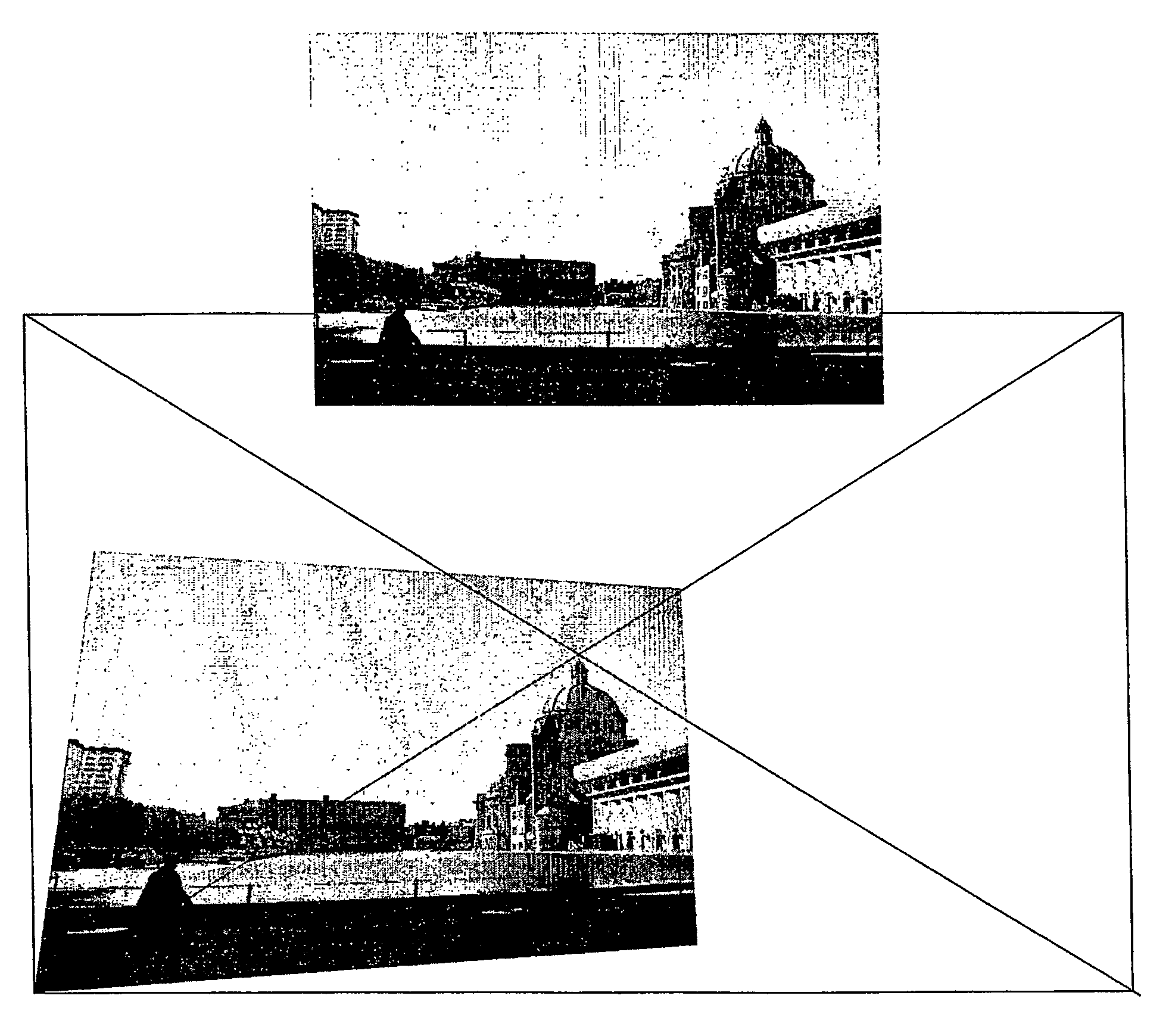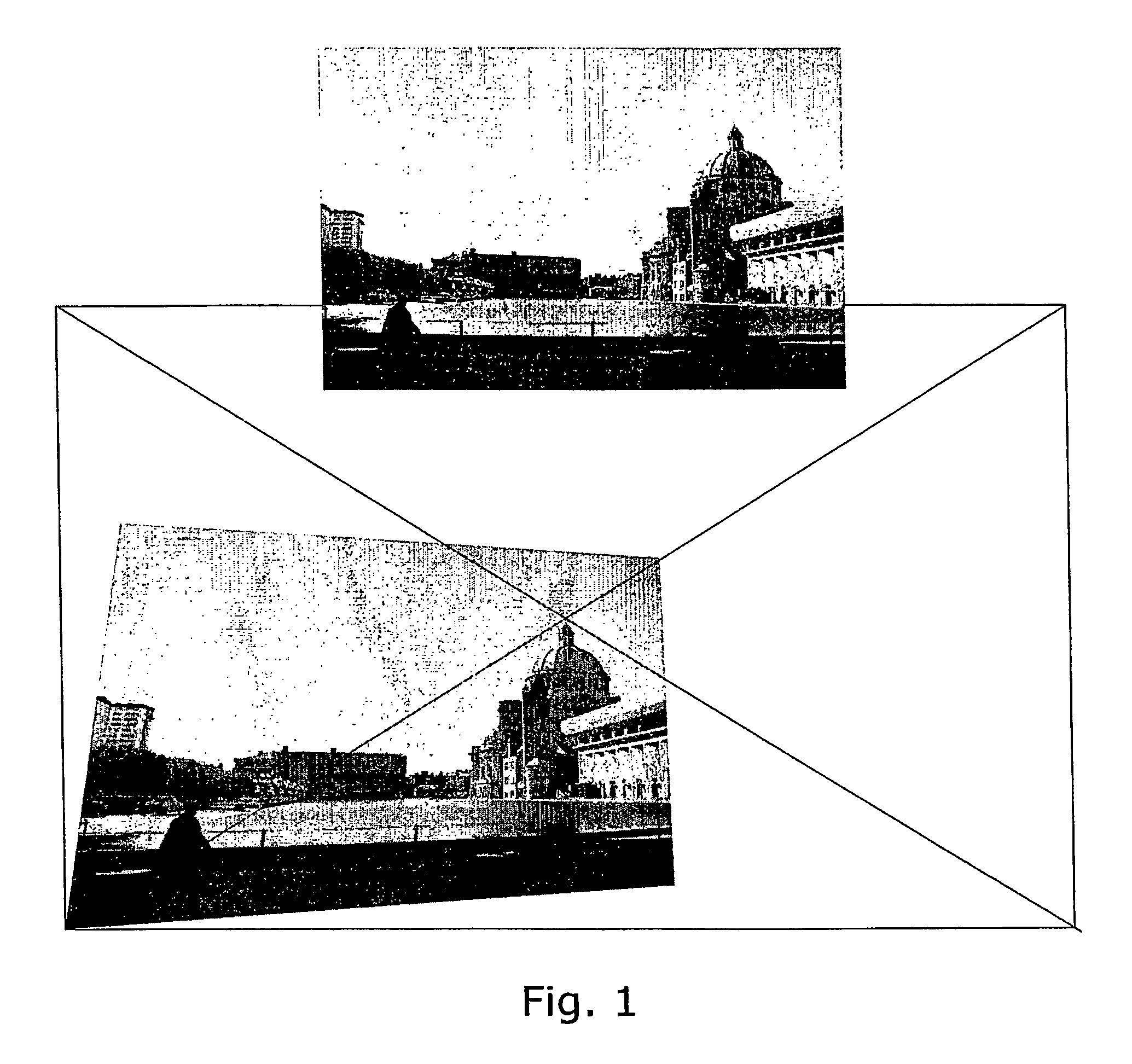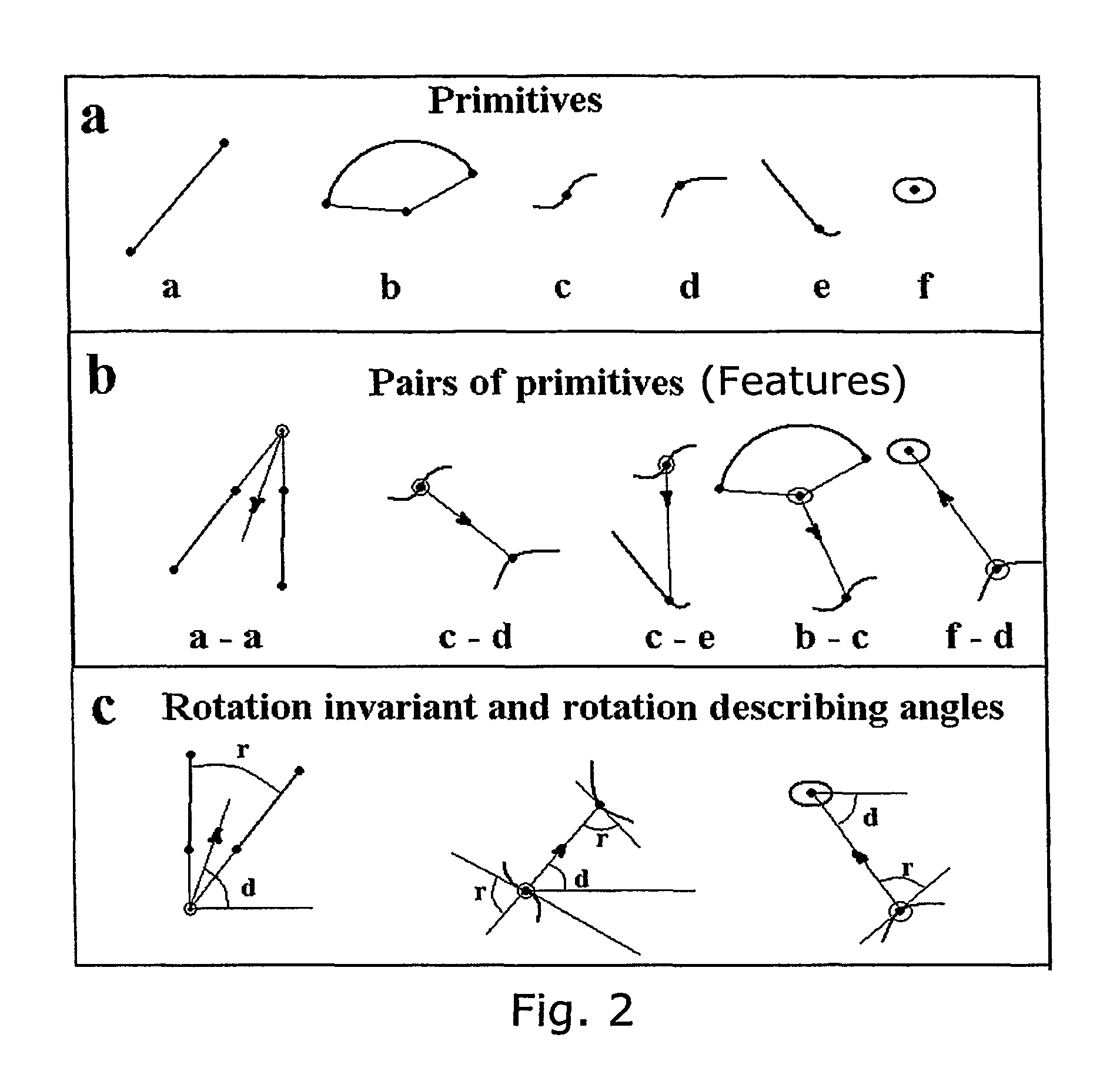Computer-vision system for classification and spatial localization of bounded 3D-objects
object technology, applied in the field of object recognition in a computer vision system, can solve the problems of system unacceptably low processing speed, high price of fixings, and serious drawbacks of computer vision systems developed so far
- Summary
- Abstract
- Description
- Claims
- Application Information
AI Technical Summary
Benefits of technology
Problems solved by technology
Method used
Image
Examples
Embodiment Construction
[0090]The invention described here is aimed at all the situations described in the section Background of the invention. Focus is put on the following properties:[0091]Simple generation of training information[0092]Reasonably low volume of training information.[0093]Exact treatment of the perspective effects[0094]Generality concerning the shape and the visual appearance of the objects, e.g. sharp 3D edges and landmarks are not necessary[0095]High speed recognition without extensive 2D matching between images or 3D reconstruction.
Functionality
[0096]The computer vision system is used for classifying and / or locating bounded 3D objects belonging to distinct classes. The system consists of one or more cameras whose images are interpreted in terms of 1) class of 3D objects and 2) their spatial position and orientation (pose). Its function is to some extent independent of possible partial occlusion by other objects and of poor image segmentation. The objects need not have characteristic dec...
PUM
 Login to View More
Login to View More Abstract
Description
Claims
Application Information
 Login to View More
Login to View More - R&D
- Intellectual Property
- Life Sciences
- Materials
- Tech Scout
- Unparalleled Data Quality
- Higher Quality Content
- 60% Fewer Hallucinations
Browse by: Latest US Patents, China's latest patents, Technical Efficacy Thesaurus, Application Domain, Technology Topic, Popular Technical Reports.
© 2025 PatSnap. All rights reserved.Legal|Privacy policy|Modern Slavery Act Transparency Statement|Sitemap|About US| Contact US: help@patsnap.com



